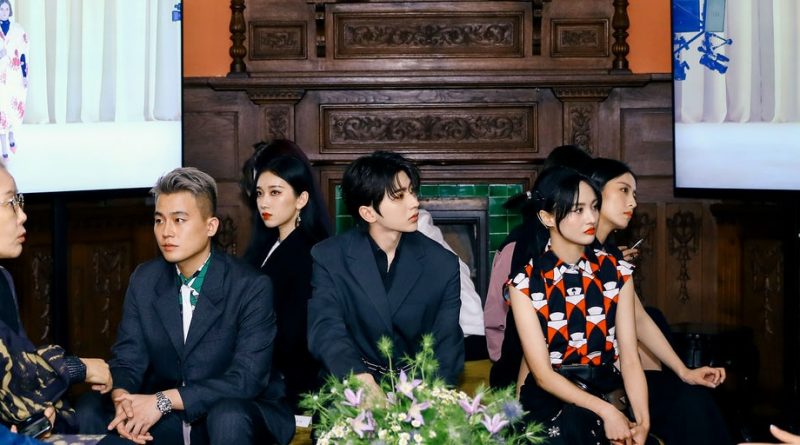Which Brands Resonated Most in China This Fashion Month? | BoF Professional, China Decoded
LONDON, United Kingdom — When it comes to fashion month, luxury brands’ marketing strategies for China have always relied on front-row faces. “To Chinese consumers, fashion week equals celebrities,” Maggie Mao, deputy executive editor-in-chief and fashion director at Grazia China told BoF exactly one year ago.
This season, however, brands had to make do without the physical presences of A-list heartthrobs and selfie-stick-wielding KOLs. Some names, like Prada, chose to forego the front row altogether by launching filmed runway shows sans audience. Others, like Burberry, worked with influencers to launch a livestream ahead of the Spring/Summer 2021 show.
“Of course, putting on shows in Europe without Chinese attendants does make it less of an event for the local market,” said Bohan Qiu, founder of Shanghai-based PR agency Boh Project. “I do think Chinese customers [still] care about fashion weeks in Europe, but not as much as before.”
This should give luxury executives pause for thought. Chinese wallets have never been as vital for luxury fashion brands as they are now. While spending in the US and Europe remains lethargic, the mainland’s retail sales rose for the first time this year in August, according to data published by the National Bureau of Statistics, further cementing China’s lead on the road to recovery from Covid-19.
Finding an effective alternative or supplementary marketing strategy for China should be an urgent priority for most brands. Yet luxury executives are still experimenting and exploring their options as health guidelines change; whether these new formats become more than temporary stand-ins for jet-setting crusades remains to be seen. But they do hint at a new breed of tactics aimed at engaging audiences in China — tactics that could inform the way the sector’s giants target the world’s biggest luxury market for years to come.
Who Watched What
According to data gathered by Shanghai-based KOL management and analytics firm Parklu across 10 Chinese social media platforms including Weibo, WeChat and Douyin, Prada made a big splash in China, generating over 48 million yuan (around $7 million) in earned media value (EMV) within two days of its show on September 24. The brand was mentioned by 175 Chinese influencers and content relating to Raf Simon’s co-creative debut drew over 442,300 views and 486 million impressions over the two-day period.
Prada revealed that its livestreamed show and invite-only viewing event at Rongzhai, the brand’s residence and cultural space in Shanghai, generated 48 million views on Weibo and Douyin; the show’s hashtag hit 170 million views in a day.
“Our aim was to be both global and local interacting with a more intimate approach when needed,” said the group’s Head of Marketing and Communications Lorenzo Bertelli in a press release.
“Prada generated the biggest buzz, for sure,” said Sophie Jiang, chief executive of PR firm E&A, which also has offices in mainland China and Hong Kong. “The Rongzhai gathering felt emotional and important. A lot of people in media flew from Beijing to Shanghai to take part in the event and afterparty.”
Meanwhile, Valentino, Dior and Burberry generated over 28 million, 18 million and 17 million in EMV respectively, according to Parklu.
Alongside Prada, Chanel‘s content around its October 6 show also reached an extensive digital audience. The brand’s livestream on Weibo drew a whopping 10 million views in one day; the bulk of top comments were by fans of brand ambassadors Victoria Song, William Chan and Wang Yibo, who were keen to support their idols. Views of the brand’s hashtag on Weibo, filled mostly with celebrities and fan accounts promoting the livestream, hit a staggering 430 million views as of October 8. Louis Vuitton’s hashtag, by comparison, accumulated around 18 million within the same period.
For some Chinese fashion industry insiders, what stood out were new, experimental digital formats — Qiu found Balenciaga’s music video, released in lieu of a live show, refreshing alongside other brands returning to large runway formats.
“The Balenciaga one made a real ripple,” Qiu said. “I think the Kering camp… tried to innovate from the traditional fashion show, which feels outdated considering not everyone can go there.”
For E&A’s Jiang, Moschino’s short film featuring a shrunken-down collection and marionette versions of models and industry leaders made a big impression. “It was smart of them, as it encouraged [editors like Angelica Cheung, who featured in the clip] to repost their content,” she said.
Drawing 21,000 views in three days and 5,785 views in 12 days respectively on Weibo, Balenciaga and Moschino’s videos didn’t gain nearly as much traction as Prada or Chanel’s livestreams. But loyal fans of the brand still tuned in and sang their praises. “Every look is on point for me,” user @Vagraint commented.
Live and Localised
“Fashion shows, the way they’ve been presented to the market [in the past], haven’t been the most engaging or interesting,” said Iris Chan, a partner overseeing international client development at Digital Luxury Group. “The pandemic has forced brands to rethink how they do things. Everyone has to be a bit smarter about every dollar they’re spending.”
Beyond brands inviting influencers and industry insiders to watch shows from the comfort of their homes, Chan noticed a surge in brands either hosting offline viewing events or encouraging influencers to do so within their own social circles. Fendi opted for the latter by sending out invites globally enclosed with a box of logo-branded pasta, having the likes of Hong Kong-based socialite Feiping Chang host private dinner parties to ring in the new collection.
Valentino invited celebrities like house ambassador Lay Zhang to a star-studded live viewing party. A Weibo video post by Marie Claire China of Zhang telling fans to tune in to the livestream has since garnered almost 144,000 likes.
Some brands chose a slightly different route. Loewe, whose ‘show in a box‘ method returned for a second season and riffed on the ‘at home’ theme. The brand partnered with KOLs like Mia Kong and Licheng Ling to unpack posters to create still lifes and on-brand sets for their social media posts.
“Loewe did a really great job,” said Shanghai-based Creative Director Erica Zhu. “Its ‘show on the wall’ format got the brand concept across in a creative way.”
Localised activations are especially valuable in the mainland: The West’s livestreaming formats are still nascent and passive compared to the hyper-interactive livestream experiences in China, a market that became well-acquainted with the medium years ago and one that supports its own unique ecosystem of livestreaming platforms.
“Having those voices help narrate or help comment from a Chinese perspective for the Chinese audience really brings to life the front row experience,” said Chan, who sees this season’s moves as baby steps in the right direction. “There’s just that much more room to do something with the Chinese consumer that already has the appetite for livestreams.”
The shift is also a cultural one. Brands need to adapt their marketing strategies as Asia’s luxury spending power increasingly overtakes that of the West.
“[A single] overarching global message no longer speaks to Asian audiences,” said Qiu. “Brands today can’t just rely on an Anglo-Saxon voice… which customers here find hard to relate to.”
Re-Show 2.0
Alongside activating fashion week events in China, brands like Louis Vuitton have already gone the extra mile by reshowing collections in the mainland (the likes of Dior have done the same in Japan). Following Louis Vuitton’s menswear show in Shanghai, the brand announced that stores in mainland China, Taiwan and South Korea marked record sales weekends. The brand’s latest offering’s performance pales in comparison to the August show — the latter’s hashtag has since been viewed 1.57 billion times on Weibo.
The re-show approach is nothing new — Fendi staged a catwalk show on the Great Wall of China as early as 2007 — but it bears more potential than ever while international travel is not an option. Bringing novel experiences to Chinese tastemakers and customers is still something that many brands haven’t tackled head-on, according to Chan.
Qiu attributed the commercial success of Louis Vuitton’s menswear show to the fact that many of the brand’s VIP customers, “the ones who should look at the collections first-hand,” were in attendance. “Combining what you want to show to the industry with what you want to show to customers is what a lot of fashion houses are struggling [with].”
Combining what you want to show to the industry with what you want to show to customers is what a lot of fashion houses are struggling with.
Looking ahead, brands will have to reach their China targets while keeping a close eye on costs, which can add up fast in the country’s ‘pay to play’ media environment. Rather than tapping the hottest celebrities of the moment, adopting a ‘pyramid’ KOL strategy — carefully building relationships with a few on-brand A-listers while working with a larger number of hand-picked KOLs and micro-influencers — will be the new modus operandi, said Chan.
For players like Prada that have real estate in the mainland, localised gatherings are cost-efficient; sustainability perks are also worth noting, considering the financial and environmental cost of flying influencers, press and buyers into far-flung locations across the globe.
Ultimately, this season’s experiments have laid the groundwork for brands to get creative and experiment further with storytelling through China’s digital and omnichannel landscape.
“What Louis Vuitton did on the West Bund, that wasn’t a massive show in terms of what could be massive in China,” said Chan. “The old fashion week model is something that brands will continue to come in and out of, [but] it doesn’t mean a brand is stuck with that.”
时尚与美容
FASHION & BEAUTY
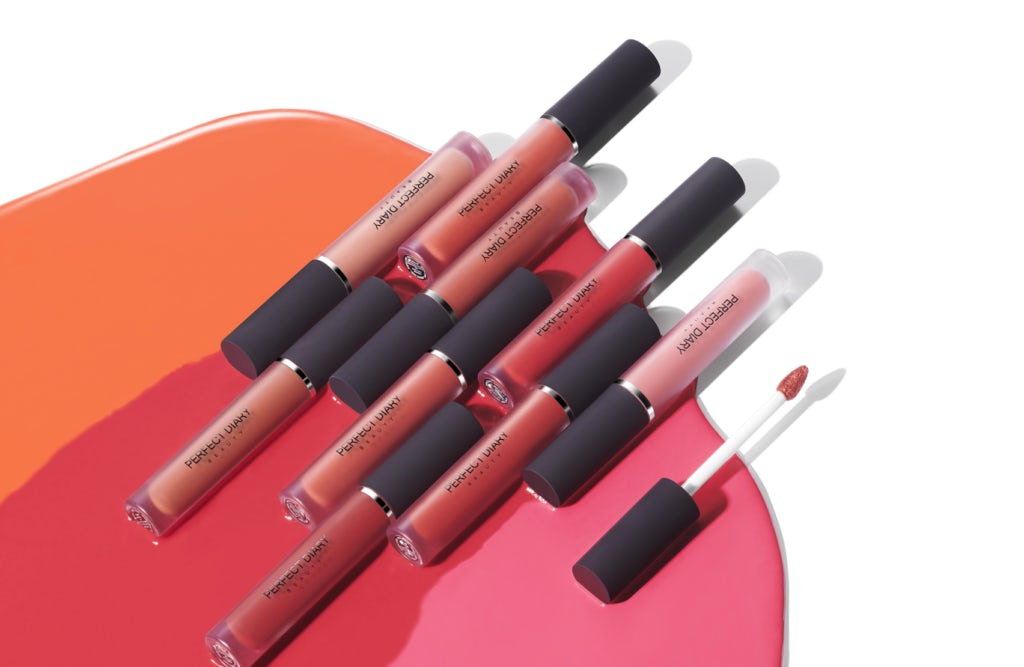
Liquid lipsticks by Perfect Diary | Source: Courtesy
Perfect Diary Inks $140 Million Investment
The digitally-savvy homegrown beauty brand reportedly raised $140 million from private equity firms Warburg Pincus and The Carlyle Group. The investments value the four-year-old business at $4 billion, double the $2 billion market capitalisation it was rumored to have in early 2020. Perfect Diary is reportedly planning to go public in the US before the end of the year, though other outlets have reported that an IPO in Hong Kong is on the cards. According to Euromonitor data from 2019, the Guangzhou-based company had a 4 percent share of China’s colour cosmetics market, ranking third behind brands owned by LVMH and L’Oréal. (All Weather TMT)
The ‘New Normal’ for Luxury Supply Chains
The pandemic and recent reports exposing unjust labour practices have hammered home the downsides of a “world factory” model, where a small group of countries manufacture goods for the rest of the world. The decoupling of countries like the US and Japan from Chinese manufacturing could split mass-production into a ‘double supply chain.’ A shift of this magnitude will take decades and require governments and businesses to promote nearshoring — in addition to transparency and deeper relationships along the supply chain — as the ‘new normal.’ (Jing Daily)
科技与创新
TECH & INNOVATION
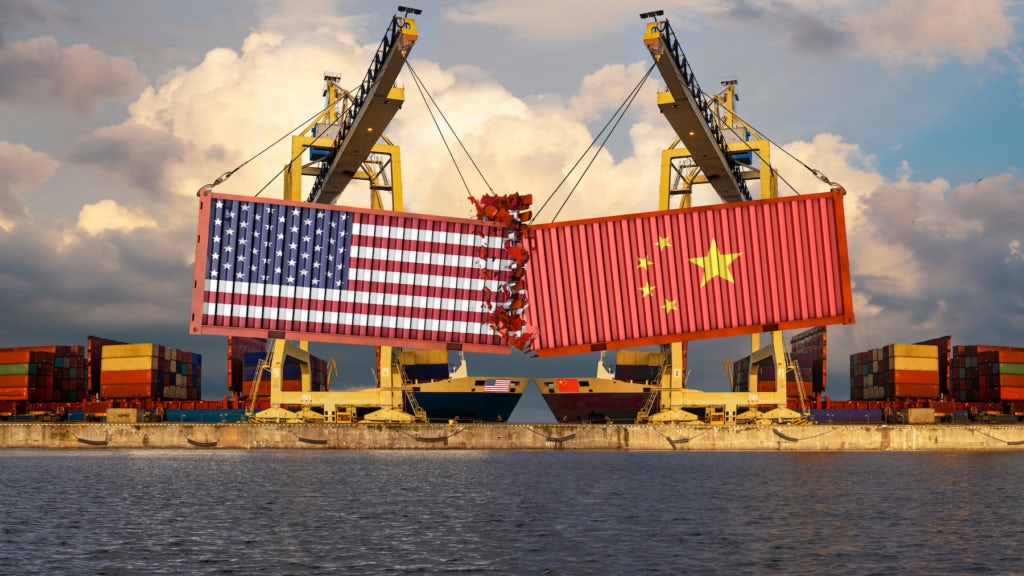
US-China trade war illustration | Source: Shutterstock
Report: Chinese Tech Faces Existential Crisis
The US and India’s boycotts of firms like Bytedance and Huawei are just the beginning of a wider shift as Chinese tech firms become the subjects of global scrutiny, said a report from the Hinrich Foundation. “These actions have created an existential crisis for Chinese companies, which have come under fire as they are increasingly viewed as de facto proxies of the Chinese Communist Party,” said Alex Capri, who authored the report. “In the broader context of a US-China technology cold war, Chinese companies’ linkage to Beijing has relegated them to the status of malign actors.” According to the report, Washington will only tighten its grip on Chinese firms looking to expand abroad, regardless of the outcome of November’s US presidential election. (Bloomberg)
Alibaba Unveils Digital Factory
A home to the group’s latest innovations, the Hangzhou-based Xunxi Digital Factory leverages Alibaba’s cloud computing infrastructure and internet of things tech. The site aims to provide small- and medium-sized businesses with a digitised manufacturing supply chain made easier with customisable production. For now, the factory will focus on apparel manufacturing and follow Founder Jack Ma’s new manufacturing model, which he introduced in 2016. According to Alibaba, tech features from real-time resourcing to cost planning double its manufacturing efficiency. (Technode)
消费与零售
CONSUMER & RETAIL
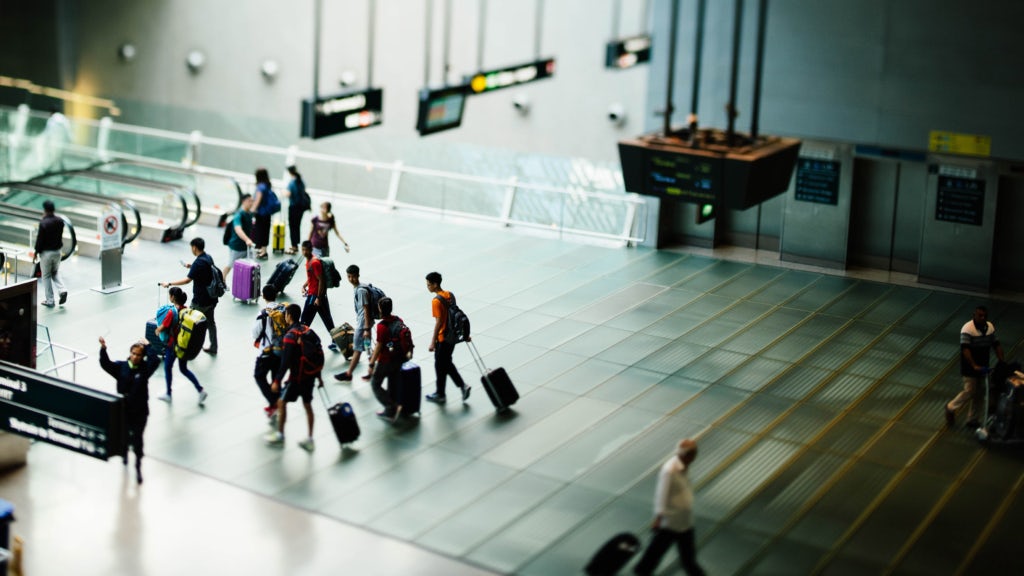
Travellers in an airport terminal | Source: Chuttersnap for Unsplash
National Day Holiday Off to Strong Start
The mainland’s ministry of culture and tourism expects that 550 million people will travel domestically during an eight-day public holiday, celebrating the mid-autumn festival and China’s national day, ending October 8. The holiday marks the the longest public vacation since the outbreak of Covid-19 in Wuhan early this year. A strong start has been made, where transaction volumes recorded by UnionPay hit 330 billion yuan (around $48 billion) on National Day, up 15.5 percent from last year. In Guizhou province alone, local media outlets reported that tourism revenue exceeded 18.9 billion yuan (around $2.7 billion) in the four days preceding National Day — 75 percent of what was recorded in 2019. (China Daily, The Paper)
‘Golden Week’ Loses Lustre for Hong Kong
In Hong Kong, however, social unrest and Covid-19 meant that businesses hoping for a rebound in sales were disappointed. Stores like H&M and Adidas closed their doors or shuttered early in major shopping district Causeway Bay due to an influx of police, protesters and journalists on October 1, the founding day of the People’s Republic of China. Across the harbour in Tsim Sha Tsui, malls like Harbour City — a favourite among Chinese tourists, who have yet to return to the city due to travel restrictions — didn’t open until noon and riot police maintained a heavy presence in the area throughout the afternoon. (SCMP)
Alibaba to Snap Up 10% of Dufry
The Chinese retail giant is joining the Swiss duty free operator’s emergency capital raising call as the latter struggles to cope with a stagnant global travel industry. Alibaba plans to take a stake of up to 10 per cent — an announcement that prompted shares in Dufry to rise 18 percent. In a statement released on Monday, Dufry said it hoped the partnership would speed up its “digital transformation” and unlock opportunities in the increasingly lucrative Chinese duty free market after the company saw its sales decline 62 percent in the first half of 2020. For Alibaba, this could be a valuable way to break into the travel retail sector as government policies encouraging domestic travel continue to buoy duty free sales in hotspots like Hainan. (FT)
政治、经济、社会
POLITICS, ECONOMY, SOCIETY
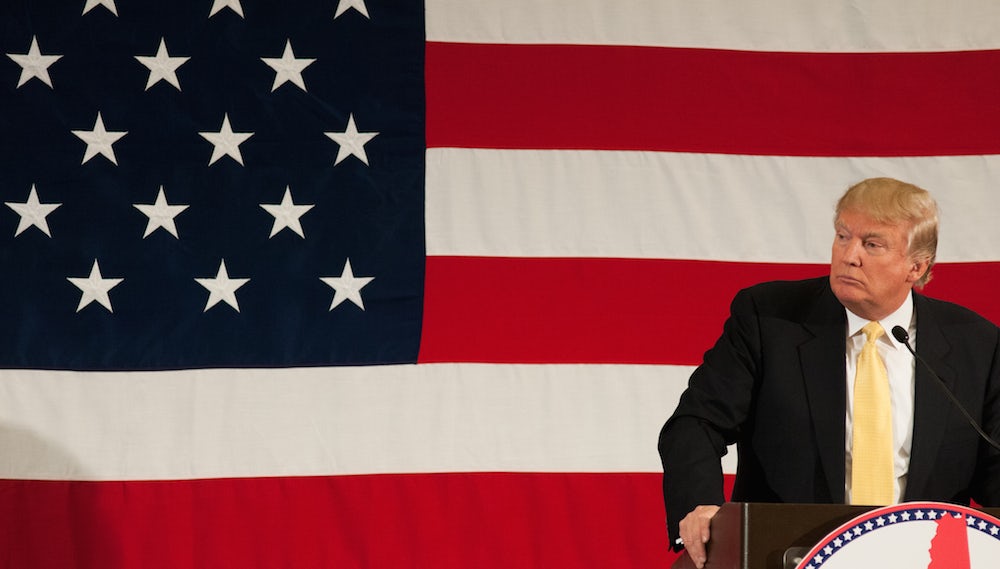
Donald Trump | Source: Shutterstock
Poll: Negativity Towards China Soars in Western Countries
Amid trade tensions with the US and in the wake of Covid-19, unfavourable views toward China have soared in 2020, according to a survey of 14,276 adults across 14 countries conducted between June and August by Pew Research Center. In In Australia, Britain, Germany, the Netherlands, Sweden, the US, South Korea, Spain and Canada, negativity towards the country reached record highs since Pew began polling on the topic over a decade ago. A median of 61 percent of respondents said China had done a poor job dealing with Covid-19, while a median of 84 percent said the same for the US. China did, however, fare well on perceptions of economic strength, respondents in most countries more had faith in President Xi Jinping than in President Trump. (The Guardian)
Japan, India and Australia Could Counter China with Supply Chain Pact
As geopolitical tensions rise in Asia, the countries are working to build stronger supply chains to counter China’s global dominance, according to people with knowledge of the matter. The source said that a “supply chain resilience initiative” is being proposed, which will rely on bilateral agreements between nations and enact measures to facilitate trade and attract foreign investment. India’s government is reportedly considering the plan, whereas an Australian official declined to confirm the the news. Japan’s government is subsidising businesses to nearshore their operations and 87 companies have signed on so far, meaning a pay out of 243.5 billion yen ($2.3 billion). Southeast Asian countries will be invited to participate as well, the source said. (Japan Times)
Chinese Billionaires Rebuild Wealth in Wake of Covid-19
Despite the pandemic and ensuing economic fallout, the number of billionaires in China reached 415 in July, an increase 0f 36 from January, according to the latest billionaires report jointly published by UBS and PwC. The combined wealth of these billionaires has hit $1.68 trillion, just below the size of Russia’s gross domestic product, accounting for half of the wealthiest people in the Asia-Pacific region. The pandemic “was actually the opportunity of a lifetime for some of these billionaires during the April and May time frame,” said LH Koh, co-head of UBS Wealth Management’s global family office business for Asia-Pacific. “Those that were aggressive made very, very good returns.” (SCMP)
China Decoded wants to hear from you. Send tips, suggestions, complaints and compliments to our Shanghai-based Asia Correspondent [email protected].

